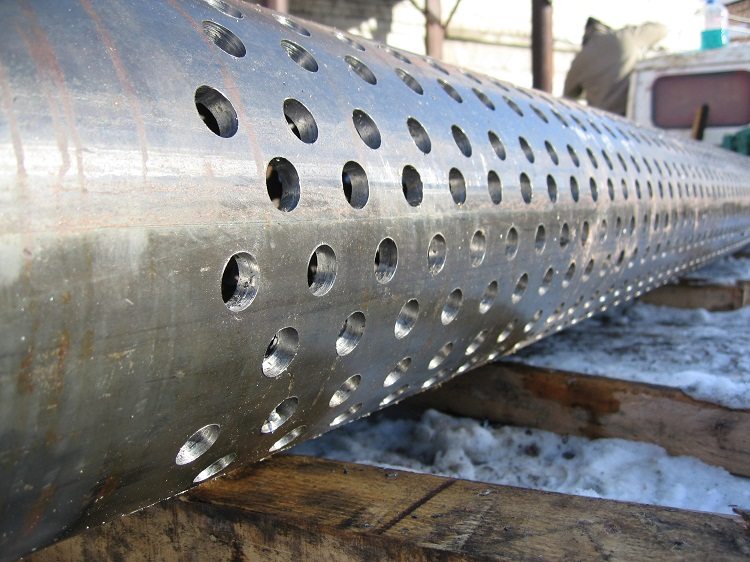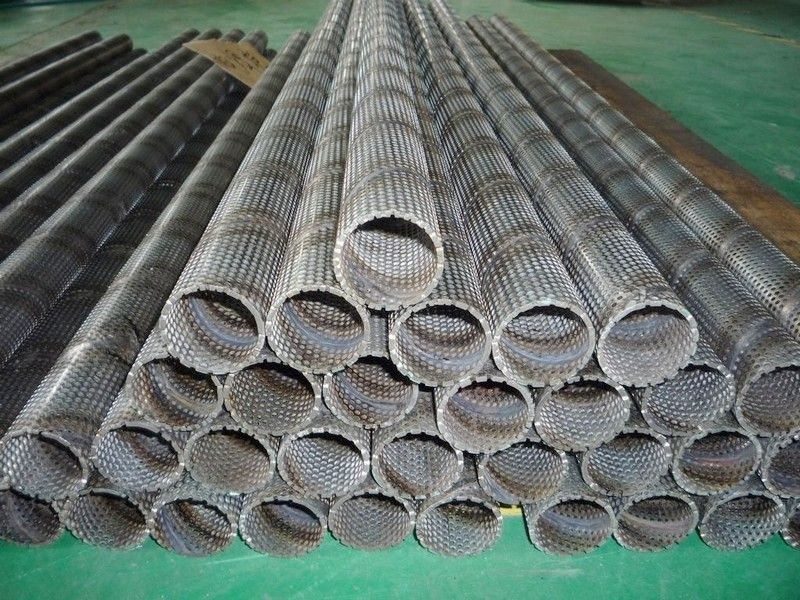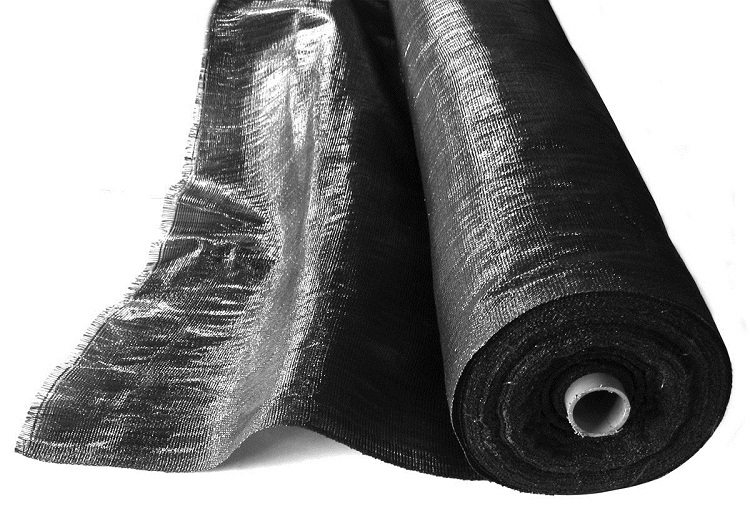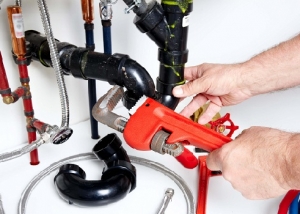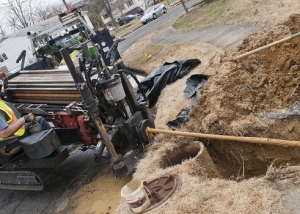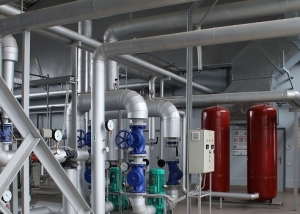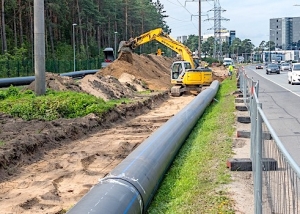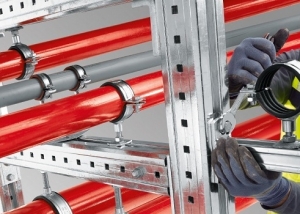The provision of communications and the improvement of private home ownership is associated with the need for a drainage system for the removal of groundwater. This problem is solved by different methods, it depends on the choice of materials and methods of their installation. Even a primitive drainage system beyond the site of excess precipitation and groundwater requires a simple drainage. Modern technology involves the use of perforated metal pipes for drainage. Metal products are still a priority due to their technical characteristics.
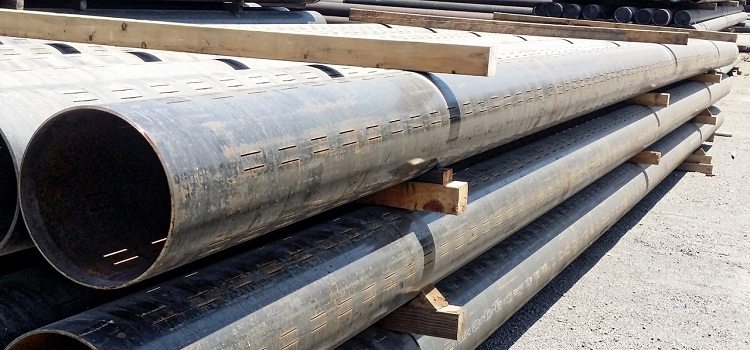
Perforated metal pipes are used in drainage systems, in well construction, and in other construction areas.
Content
Characteristics and scope of perforated pipes
Perforated metal pipe - a variety of assortment of longitudinal seam welded carbon steel products, complemented by equal holes along the entire length. The formation of holes with a certain periodicity is a perforation step. Such elements are used as filters for various purposes, for example, for the production of automobile exhaust systems. Upsetting metal pipes are required when drilling water wells.
Of course, metal or gas water pipes cannot be perforated, because they have another function - holding the indicated medium inside. However, the throughput function of such a metal part with holes is an ideal solution for drainage systems where excess water is discharged to the summer cottage.
Round products of different lengths are used for different national economic needs, for example, metal chimneys, culverts or gas pipes. Perforated products are made of plastic and metal, but polymer is a cheaper alternative to some types of metal pipes.
Note! Products made of PVC (other synthetic materials) are lighter, more durable and practical, but they cannot withstand the heavy load that metal products carry. A thick-walled metal perforated pipe is more reliable for laying under a bridge, highway or railway track.
Plastic and all its derivatives are not subject to corrosion, whether it is underground utilities or water pipes laid above the ground. Metal processing, which allows to increase the life of the entire range of steel, is expensive for consumers, since their cost is high. Old iron water pipes today are replaced by more durable products:
- aluminum, galvanized;
- a large range of carbon steel;
- composite (multilayer) products;
- new offers of high-tech alloys.
After applying a corrosion-resistant layer to a perforated metal pipe, the drainage system lasts much longer. Its surface is protected from chemical reactions during prolonged contact with acids and alkalis, organic / inorganic media, which are present in the form of fertilizers and waste products.
Types of perforations
Perforation provides an inflow of liquid medium into the communications and reduces the mass of the product. Conventional metal pipes designed for water supply are much heavier and more expensive.
It is interesting! Perforation does not reduce the functionality, strength and shape of the products, if the load, thickness, and cross-section of the pipe are correctly calculated. Not only metal culverts with perforation for sewerage and drainage are produced, production of products of a different shape on request is possible.
There are metal corrugated structures (MGK) with decorative holes used for architectural structures, as well as for large arched and vaulted structures under embankments of bridges and roads. Initially, this is a steel sheet that undergoes the process:
- cuts;
- punching;
- rolling;
- the formation of structures of the required shape and size.
Perforation should not be arbitrary shape, size and frequency. There is a standard that applies to the entire range of metal. Compliance is important under heavy loads - when laying in regions with difficult climatic conditions. In the northern latitudes, in winter, “normal” is considered a temperature below -40 ° C, ice formation, groundwater freezing inside the drainage. Under such conditions, an increased load on all types of metal products is obvious, including smoke, casing, gas, and plumbing.
Perforated metal culverts differ in the type of perforation:
- round shape of holes;
- oval;
- square;
- rectangular;
- hexagon (figured).
Any variety can be used in the arrangement of the filter layer - to divert excess groundwater into drainage wells so that buildings are not destroyed.
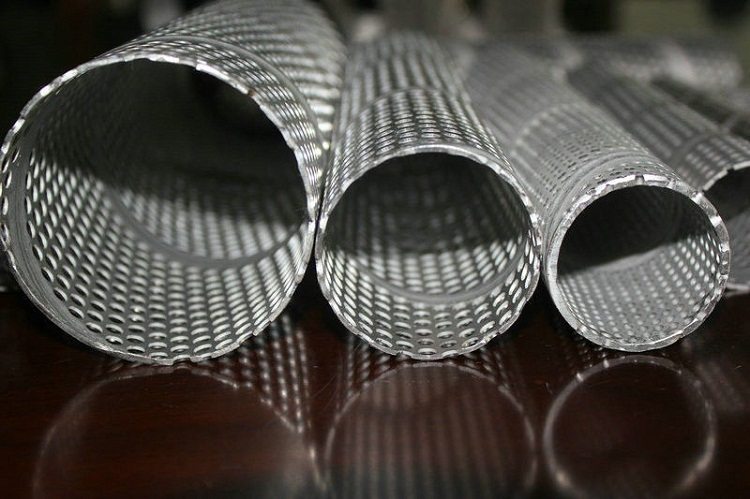
Perforated pipes are available in different sizes, you can choose a product with a diameter of 50 to 150 mm
Perforated pipe specifications
The choice of products is dictated by the features of the drainage system and its load.
- diameter within 50 - 150mm;
- section - 0.5 - 15mm;
- narrowing, curvature, special rolling is permissible;
- GOST 1050-74 standard - for the Middle Band;
- GOST 19282-73 standard - for the northern regions;
- type of fastening - nuts, washers and bolts;
- steel grade - according to GOST 1759-70;
- anti-corrosion treatment required.
The design features of the assortment of perforated metal round pipes must meet all parameters that can counteract the general load and negative climatic factors. This is specified in the technical "Instruction BCH 176-78." Also, deformation of any water supply lines should be excluded.
Important! Violation of the shape of the perforated metal product during transportation should lead to rejection. Otherwise, the flattening process of the pipe will continue under the weight of the soil. Fastening with bolts and nuts can be done manually or mechanically. The sections are mounted on the basis of standard safety requirements described in the standard “Instruction BCH 176-78”.
When selling perforated pipes, each batch must be equipped with fasteners, a certificate and a factory data sheet.
Another type of drainage pipes is with a geotextile coating.
On problematic soils, perforation of drainage systems is gradually clogged with fine particles - coarse sand, small stones and organic layers. Because of this, the functionality of culvert communications is reduced and becomes ineffective. To counter this trend, manufacturers offer a technical geofabric for winding system elements. This is an optional filter that protects holes from clogging.
The filtering winding does not reduce the properties of the drainage system and can successfully serve for many years. This device allows you to dispense with a summer cottage without additional protection systems and filtering such communications. Without this sheath, when laying pipes on a substrate, laying geotextiles is recommended. It goes under the compaction of small gravel, after which everyone is covered with sand and restores the turf layer or landscapes the territory in another way.
Specialists in the installation of perforated tubular products have long appreciated the benefits of this variety of metal products for landscaping personal plots. Domestic enterprises have long established the production of quality products with similar characteristics. The specified range for drainage meets all operational requirements. These communications serve as long as all other pipes - casing, smoke, water pipes.
